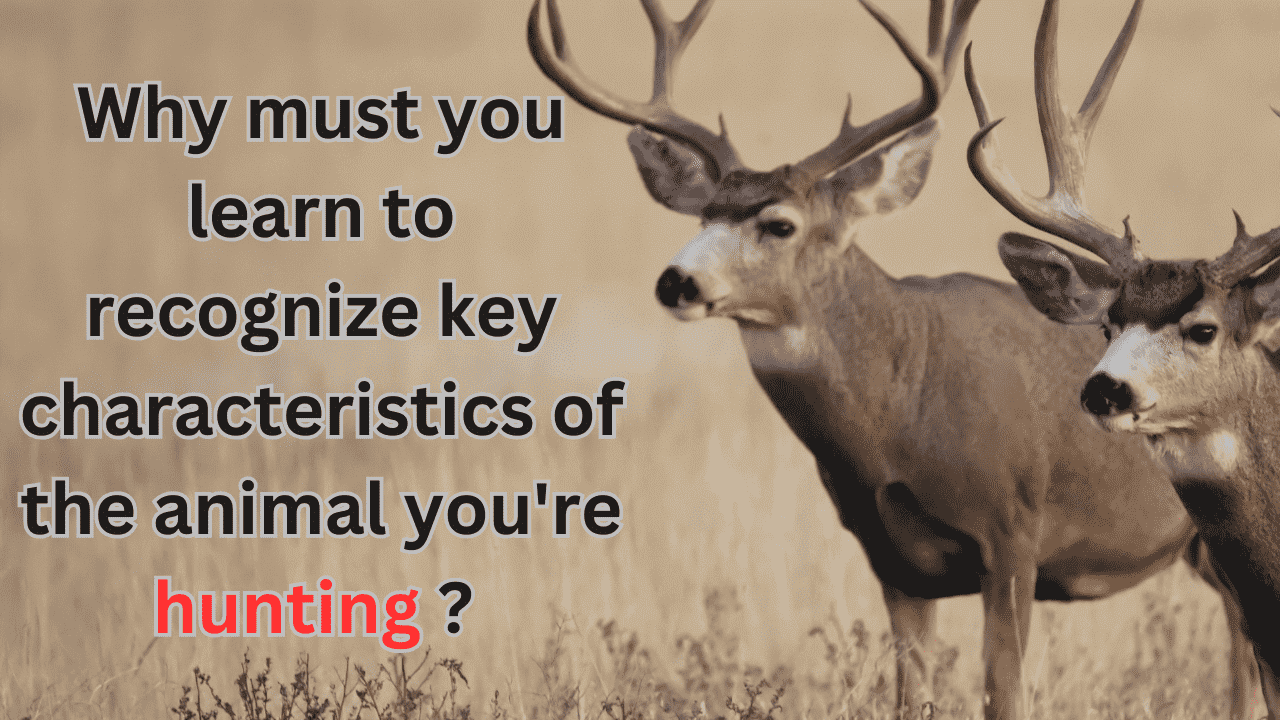The Art of Hunting
Hunting, an ancient human hobby, has evolved from a pleasant outdoor pastime to a survival requirement. Developing the ability to identify essential animal features is crucial for any hunter.
1. Ethical Hunting Practices
Responsible hunting goes hand in hand with ethical practices. By learning to recognize key characteristics, hunters can make informed decisions about when and where to hunt, ensuring that they target specific species and avoid endangering others. This knowledge promotes conservation and helps maintain the delicate balance of ecosystems.
2. Conservation Efforts
Knowing the important characteristics of the game you hunt demonstrates your dedication to conservation. You can make a valuable contribution to wildlife management initiatives by being aware of the population dynamics, breeding patterns, and movement patterns of your target species. In order to maintain animal populations and preserve biodiversity, ethical hunters are essential.
The Art of Tracking
One of the fundamental skills in hunting is tracking. To be a successful tracker, you must be adept at recognizing and interpreting the signs left by your prey. This skill is not acquired overnight; it requires a keen eye, patience, and a deep understanding of the targeted animal’s habits.
1. Tracks and Traces
Animals leave behind a trail of clues that tell a story of their recent activities. From the size and shape of footprints to the freshness of scat, each detail contributes to the larger narrative. Recognizing these signs allows you to anticipate the animal’s movements and increases the likelihood of a successful hunt.
2. Camouflage and Adaptations
Key characteristics go beyond tracks and traces. Understanding the physical attributes and adaptations of your target species is crucial for effective camouflage. Whether it’s the color of fur, patterns, or distinctive markings, blending into the environment is a skill that can make the difference between a close encounter and a missed opportunity.
Enhancing Safety
Hunting, while thrilling, comes with inherent risks. Recognizing key characteristics not only improves your chances of a successful hunt but also enhances safety for both the hunter and the hunted.
1. Avoiding Misidentification
In the excitement of the hunt, misidentification can occur. Knowing the specific characteristics of your target species minimizes the risk of mistakenly targeting protected or endangered animals. This knowledge is not only a legal requirement but also a moral obligation for every conscientious hunter.
2. Understanding Behavior
Animals can be unpredictable, especially when cornered or threatened. Recognizing key behavioral characteristics allows hunters to anticipate reactions and make informed decisions in the field. This understanding reduces the likelihood of dangerous encounters and ensures the safety of everyone involved.
The Connection Between Hunter and Nature
Hunting is more than a pursuit of prey; it’s a connection between the hunter and the natural world. Recognizing key characteristics deepens this connection, fostering a profound appreciation for the intricate web of life.
1. Cultural Respect
Many indigenous cultures view hunting as a sacred practice deeply intertwined with spirituality and respect for nature. Recognizing key characteristics is a way of honoring these traditions, acknowledging the significance of the hunt in the broader context of cultural heritage.
2. Personal Growth
Learning to recognize key characteristics is a journey of self-discovery. It hones your observation skills, patience, and adaptability. The pursuit of knowledge about your prey instills a sense of responsibility and mindfulness, enriching not only your hunting experience but also your personal growth.
3. Technological Advancements
Modern hunters benefit from a range of technological tools that aid in recognizing key characteristics. Trail cameras, for instance, provide valuable insights into animal movements and behavior patterns. These tools complement traditional tracking methods, offering a comprehensive approach to understanding the elusive nature of your prey.
4. Environmental Awareness
In an era where environmental conservation is a global concern, hunters play a pivotal role as stewards of the land. Recognizing key characteristics extends beyond the individual hunt; it encompasses a broader awareness of the ecosystem. Hunters today are increasingly attuned to the delicate balance of nature, advocating for sustainable practices and habitat preservation.
Developing Your Skills
Now that we’ve established the importance of recognizing key characteristics, let’s delve into practical steps to develop and refine these skills.
1. Field Observation
The most straightforward way to improve your capacity to identify important traits is to work in the field. While stalking an animal, observe its behavior from a distance. Take note of its movements, social interactions, and reactions to environmental changes. Having direct experience is important to developing an advanced grasp of your target.
2. Study Guides and Resources
Invest in reputable field guides and resources specific to the wildlife in your region. These guides provide detailed information about the physical features, habits, and habitats of various species. Familiarize yourself with these resources, and consider them essential companions on your hunting journeys.
3. Seek Mentorship
Learning from experienced hunters can significantly accelerate your understanding of key characteristics. Seek out mentorship from individuals who have honed their skills over years of hunting. Their practical insights and real-world experiences can offer valuable perspectives that go beyond what books and guides can provide.
Ethical Considerations in the Hunt
In the pursuit of recognizing key characteristics, ethical considerations should always be at the forefront of a hunter’s mind.
1. Selective Harvesting
Understanding the key characteristics of your target species allows for selective harvesting, a practice that promotes the sustainability of wildlife populations. By focusing on specific age groups or genders, hunters contribute to the natural balance within the ecosystem, ensuring the long-term health of the animal populations.
2. Habitat Preservation
Recognizing key characteristics also involves understanding the impact of hunting on the habitats of your prey. Responsible hunters actively engage in habitat preservation efforts, advocating for the conservation of natural spaces and supporting initiatives that maintain biodiversity.
The Future of Hunting: Balancing Tradition and Conservation
As we contemplate the future of hunting, it becomes evident that the integration of tradition and conservation is crucial for the sustainability of this ancient practice.
1. Conservation Through Recreation
Hunters can become ambassadors for conservation by showcasing the symbiotic relationship between responsible hunting and the preservation of natural ecosystems. Through education and advocacy, hunters can contribute to public awareness, fostering a deeper understanding of the critical role they play in maintaining the delicate balance of our planet.
2. Embracing Change
Adaptability is key in the evolving landscape of hunting. Embrace new technologies, support conservation initiatives, and be an advocate for ethical hunting practices. By staying informed and engaged, hunters can ensure that their legacy is one of respect for nature and a commitment to leaving a positive impact on the environment.






fp7z1f
jbo4oj